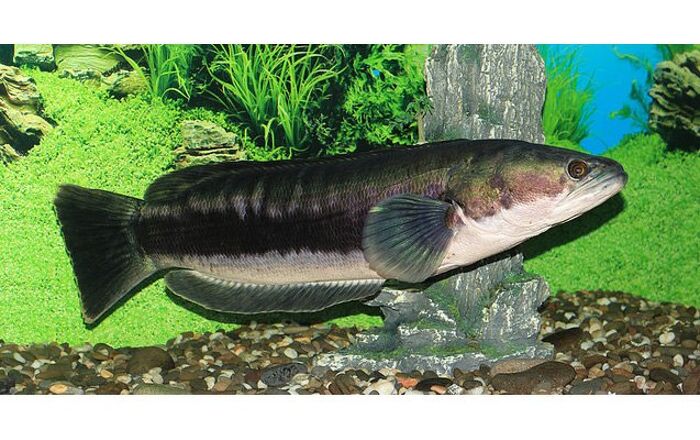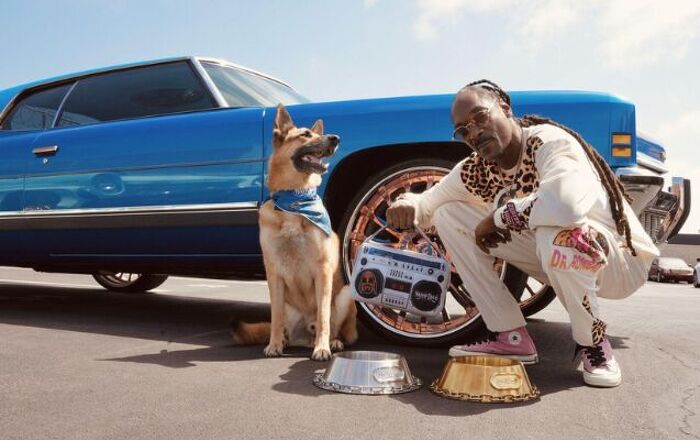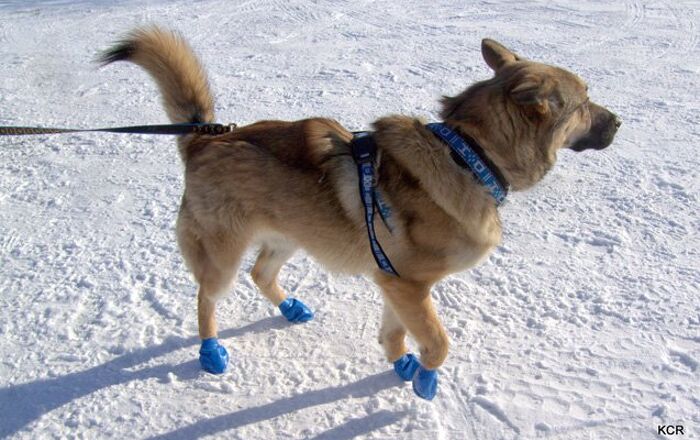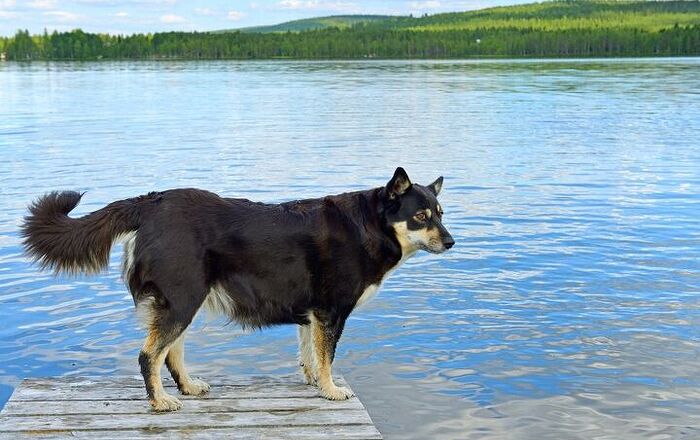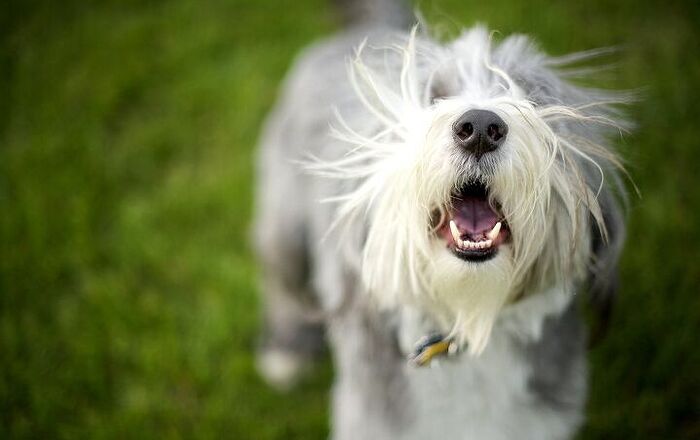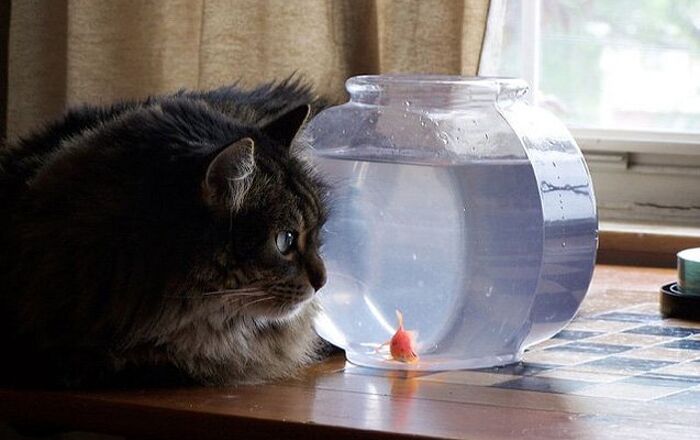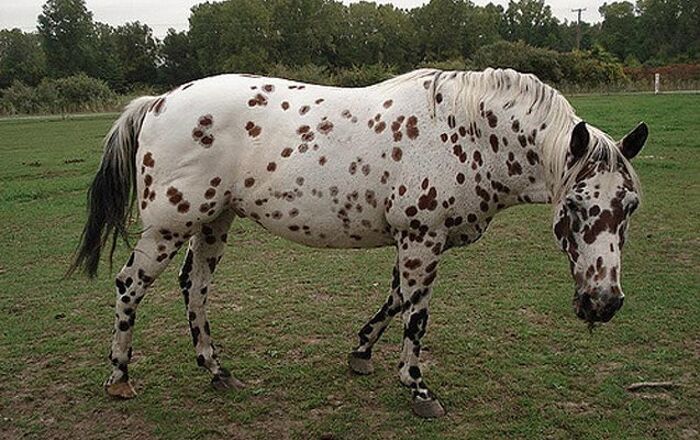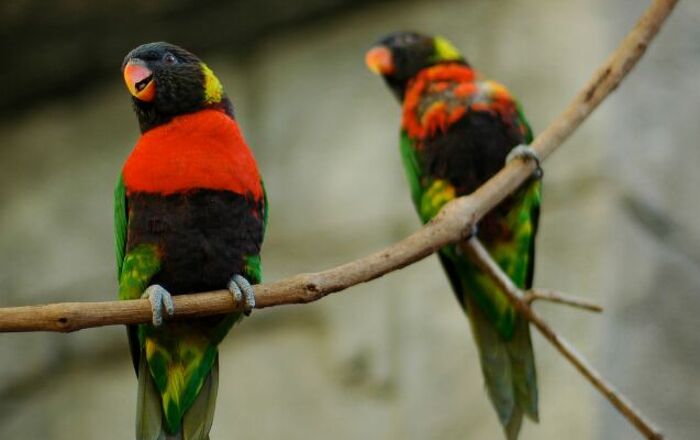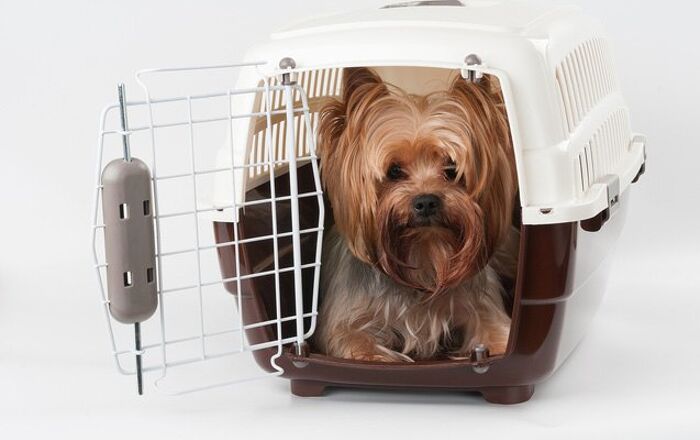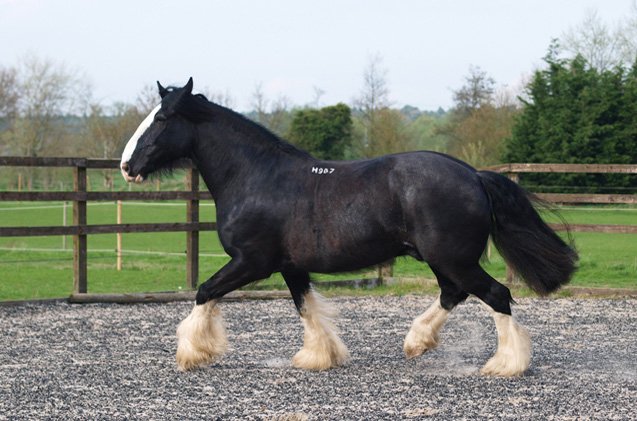
Shire Horse Breed History
Just like all other draft breeds of horses, the Shire Horse goes back to what is known as the Great Horse of England. The Great Horse was a heavy war horse that was bred from the cold-blooded equines of central Europe in order to bravely and calmly carry knights into battle in the 11th century. These animals were known for being large and for featuring hindquarters that were massive, but they were actually smaller in size when compared to the draft breeds that would develop from them.
As the need for war horses carrying knights declined, and as wheeled forms of transportation were developed, there was a new requirement. This time, it was for horses that would be strong enough to pull heavy loads with ease. As a result, carthorses were developed, and the Great Horse was used as a foundation for those new equine breeds.
Even though the Shire Horse is so large, it is known for being a gentle giant.
Evidence also points to the fact that black Flemish horses with leg feathering were brought to England in the early part of the 13th century. Therefore, those horses also influenced the Shire Horse’s development.
Cambridgeshire and Lincolnshire are typically recognized as the first places where Shire breeding took place. It was not until the middle of the1800s that the Shire Horse was imported to the United States. And in 1885, the American Shire Horse Association was created.
Breed Traits
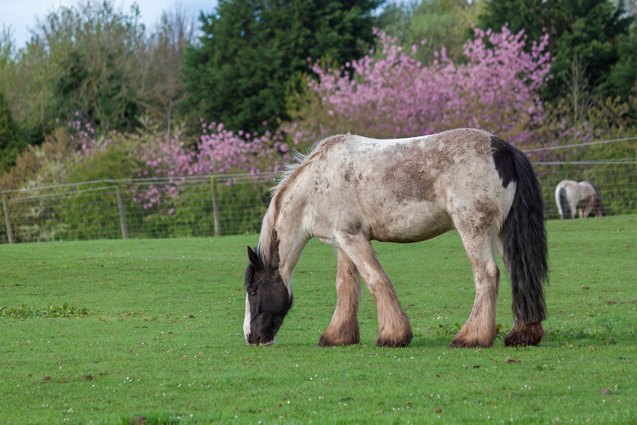
Even though the Shire Horse is so large, it is known for being a gentle giant. These animals are laid-back, calm, and docile. They are also easy to train, despite their size, so they are suitable for all levels of horse owners, riders, and trainers, including beginners. In fact, shying, rearing, bucking, and spooking are rare behaviors for this breed. However, taller riders may feel more comfortable on these massive horses.
Shire horses are also popular because they aim to please. They do not mind being around other animals, such as dogs, and they are even comfortable around loud noises, water, cars, and children.
Overall, this breed has a mellow personality and state of mind that is typically attributed to the fact that it was originally created to work as a war horse. That occupation required that the animals stay calm and even-tempered during the most chaotic and dangerous situations, and those traits have been passed down through the generations to modern Shire horses.
The Shire Horse is massive, with an appearance that would make it perfect for a medieval setting.
Overall Description
The Shire Horse is a massive animal, with several distinguishing features that include a long mane, large hooves, and furred feet. They also have an appearance that would make them perfect for a medieval setting.
The head of the Shire Horse is lean and long, and the animal’s eyes are large and docile, while the ears are sensitive, sharp, lean, and long. The neck should be long and in proportion to the rest of the body, as well as slightly arched, and the shoulders should be wide and deep.
This horse’s back will be muscular and strong, but short. It should not be roached or dipped. The hindquarters should be sweeping and long, as well as muscular and wide. Also, the feet should be wide, solid, and deep, with open, thick walls.
Shire horses are popular because they aim to please.
Colors
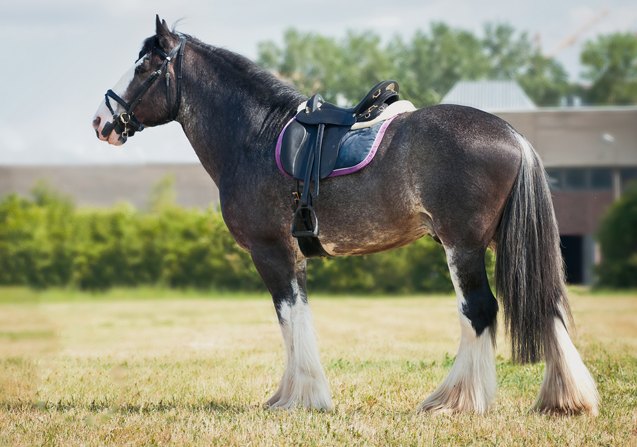
The Shire Horse’s coat should be silky, fine, and straight. The colors associated with this breed include brown, gray, bay, and black, as well as chestnut, sorrel, and roan. White markings that are excessive, such as large white patches throughout the body, are not considered desirable for this equine breed.
Grooming Requirements
Like all other equine breeds, the Shire Horse requires regular grooming sessions in order to maintain the health and beauty of the skin and coat. However, because this breed features feathered ankles, good grooming, as well as sanitary conditions, are essential in avoiding conditions like pododermatitis.
Groom a Shire Horse with care, just as you would any other horse, and spend time cleaning the coat thoroughly to remove dirt, dust, and other debris. Because this horse is taller than most, you may need to use a stool or a stepladder to access all of the areas throughout the horse’s body that need to be groomed.
Using a curry comb, you can remove loose dirt and hair with ease. A dandy brush can also be used to loosen more dirt, mud, and hair from the coat. A body finishing brush is ideal for the face and legs, which are sensitive areas, and you can also invest in a mane comb and tail brush specifically for those areas of the horse’s body. A shedding blade can remove excess hair, and a hoof pick will effectively remove dirt and debris, including rocks, from the horse’s large hooves.
To keep the feathers on a Shire Horse’s lower legs looking healthy and clean, you can spray on a detangling product designed for equines. This should make it easier to brush or comb out the feathers when grooming.


